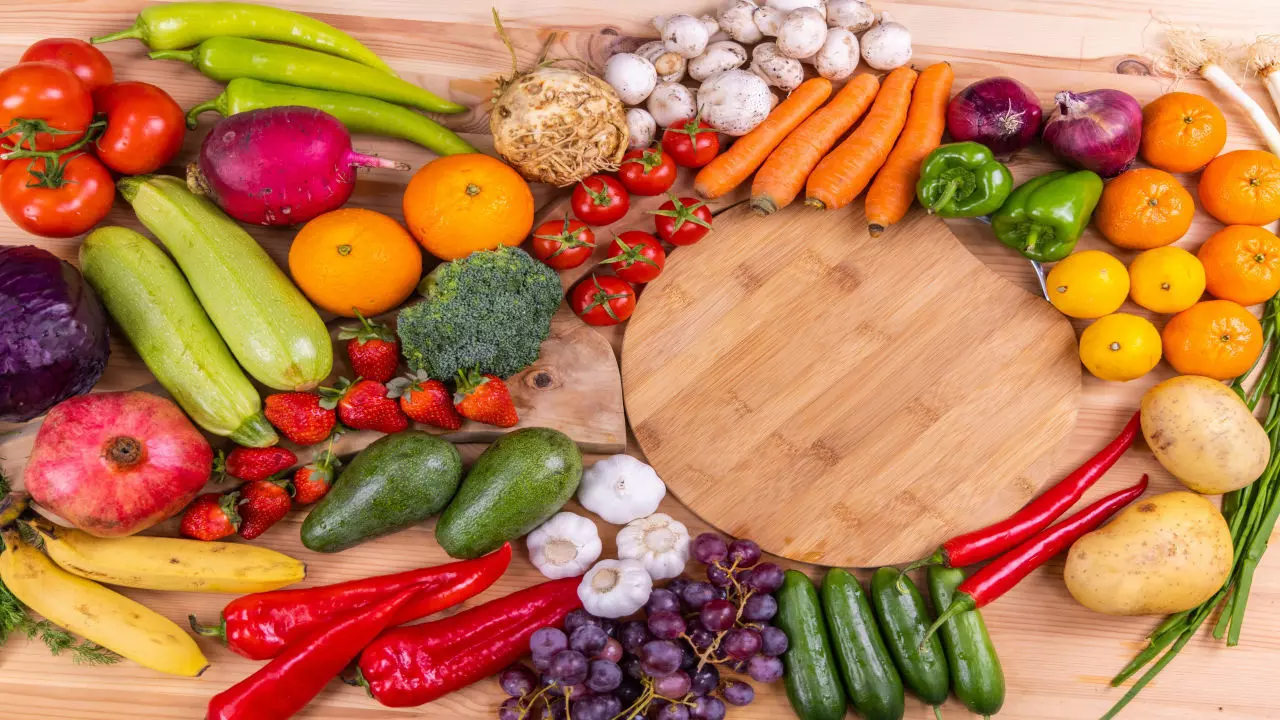TRENDING TAGS :
Real Foods and a healthy body
Know all the details related to your diet.
Real food (Pc: Social Media)
The concept of weight loss and maintenance, leading to a healthy body and weight, is based on eliminating certain foods and incorporating others into our diet. This is a learned habit, and as we continue to focus on eating real food while removing processed or artificial foods, the results will naturally reflect in better health and weight management.
The key is to adopt healthy living as a lifestyle rather than a short-term goal. The focus should be on improving and adapting to better eating habits rather than just weight loss, as weight loss is merely the outcome of healthy eating and living. Over time, the body will settle into its optimal weight based on height and sex. As we improve our eating habits and consume real food, the body will naturally adjust to a healthier weight.
No Dieting or Starvation
In this approach to weight and health management, dieting and starvation are not considered solutions. While these methods may provide short-term weight loss, the weight often returns (sometimes even more) once the diet is stopped. Additionally, dieting is not sustainable for a lifetime, but developing healthy habits is.
What Do We Need to Learn?
1. Identify and eat “real” food.
2. Maintain the right focus and consume food in moderation.
What is “Real” Food?
1. Natural and Unprocessed Foods
Eat food as nature intended—without processing or tampering.
• Vegetables (both raw and cooked) should form the foundation of your diet.
• Make vegetables a priority at every meal. Avoid juices; instead, consume whole vegetables.
• Plan meals in advance to ensure you always have fresh vegetables available.
• Aim for half of your plate to consist of raw and cooked vegetables.
2. Balanced Meals
The other half of the plate should include:
• One-quarter of the plate: A bowl of thick dal (lentils) or non-vegetarian protein.
• One-quarter of the plate: Rice or roti (whole grains preferred).
• Choose whole grains like brown rice, millets, quinoa, amaranth, wheat, etc. Avoid bread.
• Use whole, unpolished pulses (e.g., moong, masoor, urad, moth, toor, chana, kidney beans, chickpeas).
3. Cooking Methods and Oils
• Opt for boiling, stir-frying, steaming, grilling, baking, and cooking with minimal oil.
• Use cold-pressed seed oils such as sesame, mustard, coconut, olive, and peanut oils.
4. Non-Vegetarian Foods
• Consume lean meats like fish, chicken, and red meat, preferably grilled or stir-fried rather than in rich gravies.
• Avoid processed meats like salami, sausages, and seekh kebabs—stick to real cuts of meat.
5. Avoid Processed Grains
• Foods like besan (gram flour), maida (refined flour), sooji (semolina), and chivda are processed and not real foods. Instead, consume whole grains.
6. Say No to Bakery Products
• Bakery items are highly processed and contain refined flour, sugar, and unhealthy oils.
• Instead, eat fresh fruits—they are naturally sweet and satisfying.
7. Eliminate Sugar
• Sugar is not essential for the body and is harmful to overall health.
• The sugar industry has falsely promoted sugar as an energy source. In reality, you don’t need added sugar for energy.
• Train your taste buds to enjoy natural sweetness from fruits instead.
8. Avoid Milk
• Milk is not necessary for a healthy diet.
• If desired, consume plain or Greek yogurt instead.
Healthy Breakfast Ideas
Hot Options:
• Idli, dhokla, dosa, dal cheela (made from soaked rice and lentils, not packaged mixes).
• Eggs in any form, but without added oil.
• Steamed sprouts.
• Cooked quinoa, amaranth, or brown rice, prepared like poha with peanuts and peas.
Cold Options:
• Cooked quinoa, amaranth, or brown rice mixed with almond milk or yogurt, topped with chopped fruits and nuts.
• The same grains mixed with salt, pepper, and roasted cumin for a savory version.
• Fruit shake made with yogurt, almond milk, and peanut butter.
Get Moving!
Managing food intake is one part of a healthy lifestyle—the other equally important aspect is staying active.
• The human body is designed for movement, not prolonged sitting.
• Avoid sitting for more than an hour at a time. Get up and move whenever possible.
• Incorporate movement into daily life:
• Go for morning and evening walks.
• Park your car farther away and walk to your destination.
• Take the stairs instead of the elevator.
• Stand up every hour at work and drink a glass of water.
• Stay hydrated—drink plenty of water throughout the day.
By focusing on real food and an active lifestyle, you can achieve a healthy body and sustainable weight without resorting to extreme dieting or deprivation. Make small, consistent changes, and your body will naturally adapt to its healthiest form!


